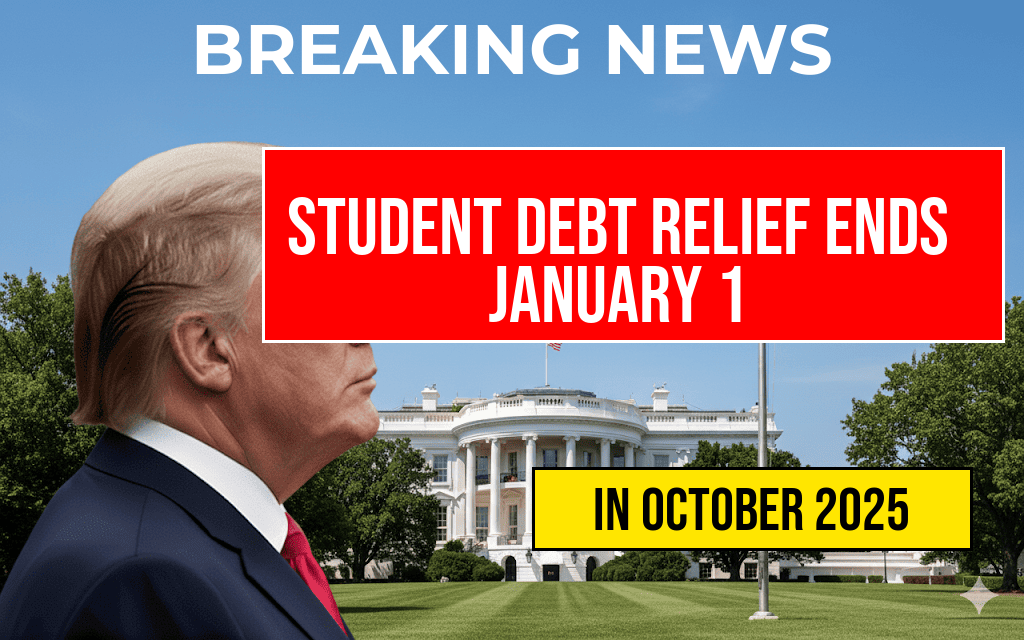Student Debt Relief Ends as Tax on Forgiven Balances Resumes January 1
A key provision that temporarily exempted student loan forgiveness from taxation is set to sunset at the start of the new year, reintroducing the federal tax obligation on forgiven balances. This development comes after a period during which borrowers received up to $20,000 in debt relief without facing immediate tax consequences, thanks to a temporary provision enacted by Congress. Starting January 1, 2024, borrowers who have their student loans forgiven under current programs or future initiatives will be subject to federal income tax on the canceled amounts, effectively reducing the net benefit of debt relief for many.
The rollback of this exemption marks a significant shift in federal policy, impacting millions of borrowers who have benefited from recent debt forgiveness programs. While the initial relief aimed to ease the financial burden carried by student loan borrowers, the reactivation of the tax obligation could lead to unexpected liabilities, prompting many to reevaluate their financial planning and repayment strategies.
Background: The Temporary Tax Exemption on Forgiven Student Debt
For the past few years, the federal government provided a temporary exemption on student loan forgiveness from income tax, primarily as part of broader efforts to alleviate economic strain amid the COVID-19 pandemic. The CARES Act, passed in March 2020, included a provision that suspended taxes on student loan forgiveness until the end of 2025. However, in 2021, Congress enacted a temporary extension that temporarily exempted forgiven student debt from taxable income through the end of 2023.
This exemption was particularly beneficial for borrowers participating in income-driven repayment plans or qualifying for targeted forgiveness programs, such as Public Service Loan Forgiveness (PSLF). Many borrowers saw their debt balances reduced substantially without facing immediate tax liabilities, effectively increasing the real value of the relief they received.
Implications of the End of the Tax Exemption
Starting January 1, 2024, the Internal Revenue Service (IRS) will resume taxing forgiven student loan balances as taxable income, unless new legislation intervenes. Borrowers who receive forgiveness under existing or upcoming programs will need to prepare for a potential increase in tax bills, which could amount to thousands of dollars depending on the amount forgiven.
| Balance Forgiven | Approximate Taxed Amount (at 24% federal rate) | Potential Additional Tax |
|---|---|---|
| $10,000 | $2,400 | $2,400 in additional tax liability |
| $20,000 | $4,800 | $4,800 in additional tax liability |
This change may disproportionately affect borrowers who relied heavily on forgiveness programs, particularly those in public service or low-income households. Experts warn that failure to plan for the tax implications could lead to unexpected financial strain.
Legislative and Policy Responses
Efforts to mitigate the impact of the tax re-imposition are underway. Some policymakers have proposed legislation to extend the exemption or introduce targeted relief measures. For instance, the Student Loan Forgiveness Act has garnered support in Congress, aiming to provide a temporary or permanent tax exemption.
Additionally, borrowers are encouraged to consult financial advisors or tax professionals to develop strategies for managing potential liabilities. Some options include setting aside funds in anticipation of tax bills or exploring repayment plans that minimize tax consequences.
What Borrowers Should Do Now
- Review your student loan status: Confirm whether your loans are eligible for forgiveness and understand the projected tax impact.
- Consult a tax professional: Seek personalized advice on how to prepare for the upcoming tax obligations.
- Monitor legislative developments: Stay informed about any new bills or executive actions that could alter the current policy landscape.
- Explore repayment options: Consider income-driven repayment plans or other strategies to reduce taxable forgiveness amounts.
The Department of Education and IRS have published guidance for borrowers on how to handle upcoming tax liabilities related to student loan forgiveness. Borrowers can find additional information on the IRS website (https://www.irs.gov) and the Department of Education’s official resources.
Looking Ahead
As the federal government reverts to pre-pandemic policies regarding the taxation of student debt forgiveness, the landscape for borrowers continues to evolve. While the temporary exemption provided welcome relief, the resumption of taxation underscores the importance of proactive financial planning. Borrowers, policymakers, and advocates alike will be watching closely to see if legislative measures emerge to ease the burden or extend relief amid ongoing debates over student loan reform.
For more on the history and structure of student debt forgiveness programs, visit [Wikipedia’s page on Student Loan Forgiveness](https://en.wikipedia.org/wiki/Student_loan_forgiveness). To explore how debt relief impacts the economy and individual finances, Forbes offers detailed analyses and expert opinions at [Forbes’ Personal Finance Section](https://www.forbes.com/personal-finance/).
Frequently Asked Questions
Question
When does the student debt amnesty program end?
Question
What happens to forgiven student loan balances starting January 1?
Question
Will there be a tax on forgiven balances after the amnesty ends?
Question
How much relief is eliminated due to the resumption of taxes on forgiven student debt?
Question
What should borrowers expect regarding their student debt and potential tax implications in the upcoming year?

Leave a Reply